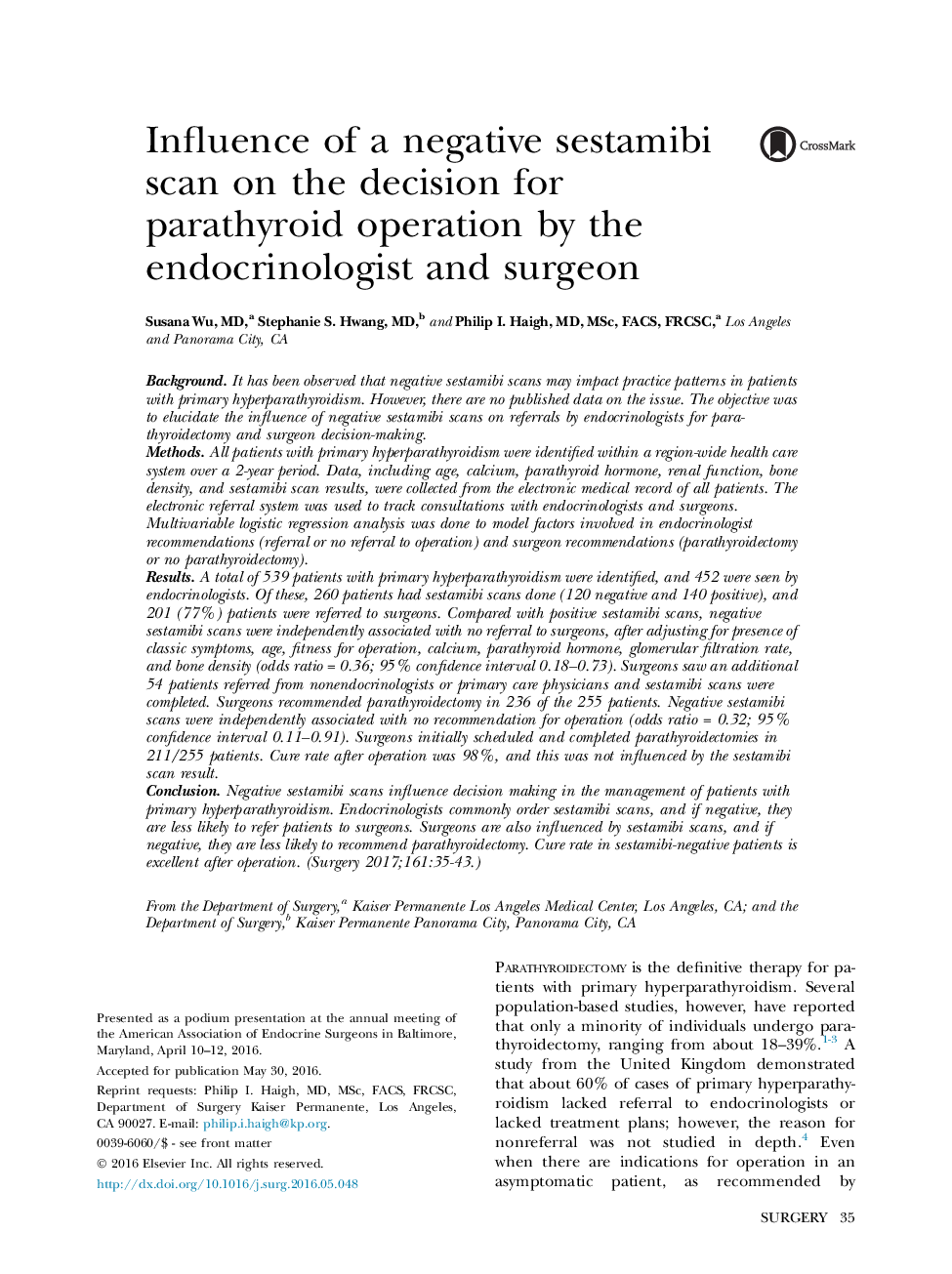| Article ID | Journal | Published Year | Pages | File Type |
|---|---|---|---|---|
| 5734489 | Surgery | 2017 | 9 Pages |
BackgroundIt has been observed that negative sestamibi scans may impact practice patterns in patients with primary hyperparathyroidism. However, there are no published data on the issue. The objective was to elucidate the influence of negative sestamibi scans on referrals by endocrinologists for parathyroidectomy and surgeon decision-making.MethodsAll patients with primary hyperparathyroidism were identified within a region-wide health care system over a 2-year period. Data, including age, calcium, parathyroid hormone, renal function, bone density, and sestamibi scan results, were collected from the electronic medical record of all patients. The electronic referral system was used to track consultations with endocrinologists and surgeons. Multivariable logistic regression analysis was done to model factors involved in endocrinologist recommendations (referral or no referral to operation) and surgeon recommendations (parathyroidectomy or no parathyroidectomy).ResultsA total of 539 patients with primary hyperparathyroidism were identified, and 452 were seen by endocrinologists. Of these, 260 patients had sestamibi scans done (120 negative and 140 positive), and 201 (77%) patients were referred to surgeons. Compared with positive sestamibi scans, negative sestamibi scans were independently associated with no referral to surgeons, after adjusting for presence of classic symptoms, age, fitness for operation, calcium, parathyroid hormone, glomerular filtration rate, and bone density (odds ratio = 0.36; 95% confidence interval 0.18-0.73). Surgeons saw an additional 54 patients referred from nonendocrinologists or primary care physicians and sestamibi scans were completed. Surgeons recommended parathyroidectomy in 236 of the 255 patients. Negative sestamibi scans were independently associated with no recommendation for operation (odds ratio = 0.32; 95% confidence interval 0.11-0.91). Surgeons initially scheduled and completed parathyroidectomies in 211/255 patients. Cure rate after operation was 98%, and this was not influenced by the sestamibi scan result.ConclusionNegative sestamibi scans influence decision making in the management of patients with primary hyperparathyroidism. Endocrinologists commonly order sestamibi scans, and if negative, they are less likely to refer patients to surgeons. Surgeons are also influenced by sestamibi scans, and if negative, they are less likely to recommend parathyroidectomy. Cure rate in sestamibi-negative patients is excellent after operation.
